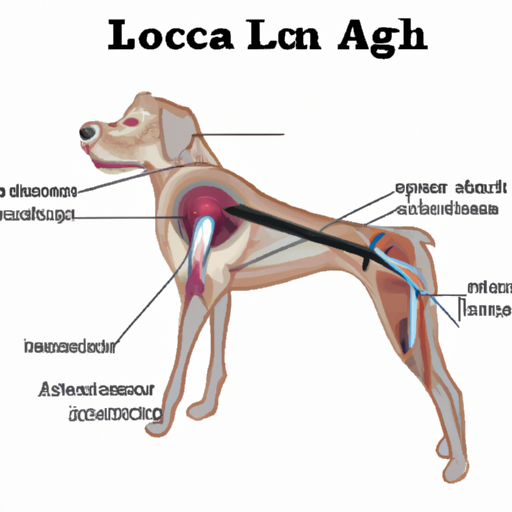Understanding Your Dog’s Anatomy
When it comes to the anatomy of your furry companion, knowing the basics can help you decipher what might be causing them discomfort. Just like you, your dog has a complex musculoskeletal system. Your dog’s Anterior Cruciate Ligament (ACL), also known as the Cranial Cruciate Ligament (CCL) in animals, is a key structure in this system. The ACL is located in your dog’s knee, which in anatomical terms is referred to as the stifle joint. This joint connects the femur (thigh bone) and tibia (shin bone) together.
Recognizing Signs of an ACL Injury
Your dog can’t tell you when something hurts, but they can show you. Here are some common signs that your dog may have injured their ACL:
- Limping: This is often the first sign. Your dog may be reluctant to put weight on the affected leg.
- Swelling: The knee may swell and feel warm to the touch.
- Pain: Your dog may whimper or react when the area is touched.
- Stiffness: Your dog may have difficulty getting up from a sitting or lying position.
Causes and Risk Factors of ACL Injuries in Dogs
Just like in humans, certain factors can make your dog more prone to ACL injuries. These factors include:
- Being overweight
- Lack of regular exercise
- Certain breeds are more susceptible (such as Labrador Retrievers, Rottweilers, and Bichon Frises)
| Risk Factor | Explanation |
|---|---|
| Overweight | Extra weight puts more strain on the joints |
| Lack of exercise | Regular exercise keeps the joints flexible and strong |
| Breed | Certain breeds have a genetic predisposition to ACL injuries |
Treatment Options for ACL Injuries
If you suspect your dog has an ACL injury, it’s crucial to seek veterinary care. Treatment options can vary depending on the severity of the injury and the overall health of your dog. Available treatments can include:
- Rest and anti-inflammatory medications
- Physical therapy
- Surgery
Keeping Your Dog’s Joints Healthy
Prevention is the best cure. Here are some ways to help keep your dog’s ACL and joints healthy:
- Regular exercise, but avoid overly strenuous activities
- A balanced diet to maintain a healthy weight
- Regular vet check-ups to catch any issues early
FAQ
Q: Can a dog’s ACL heal on its own?
A: Minor injuries may heal with rest and medication, but severe injuries often require surgery.
Q: How can I tell if my dog has an ACL injury?
A: Signs can include limping, swelling, and discomfort. Always consult a vet if you’re concerned.
Q: Is my dog at risk for an ACL injury?
A: Any dog can sustain an ACL injury, but certain factors, such as being overweight or certain breeds, can increase risk.
Q: How can I prevent ACL injuries in my dog?
A: Regular exercise, a healthy diet, and regular vet check-ups can help keep your dog’s joints healthy.



